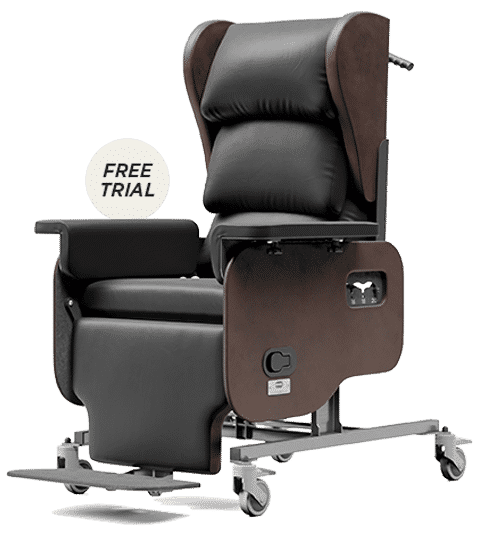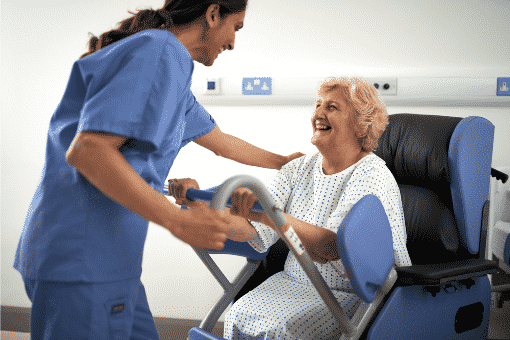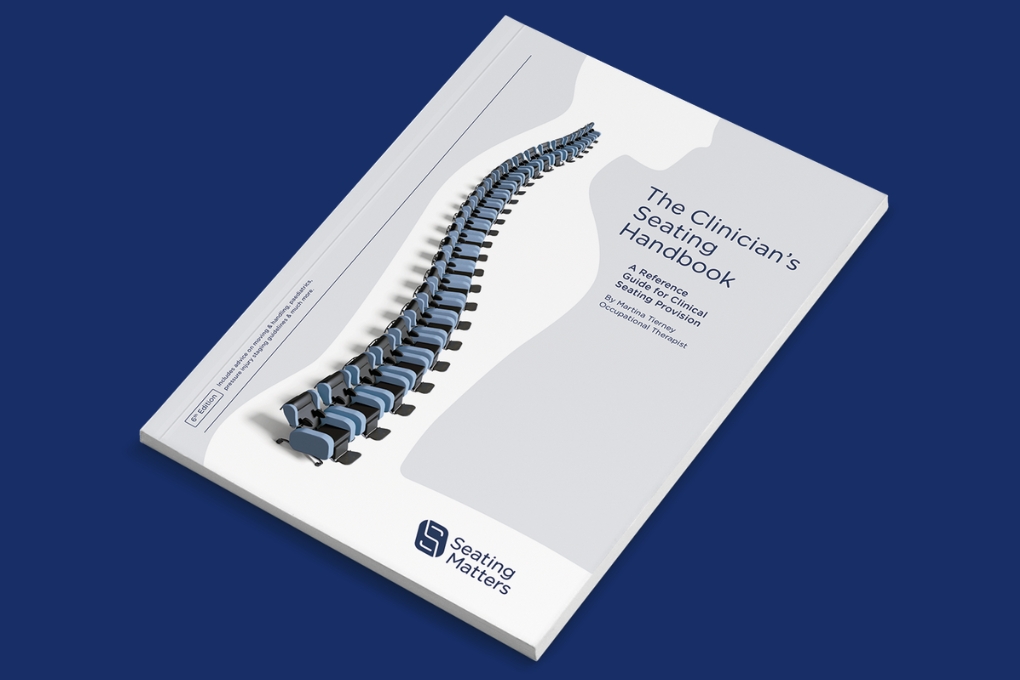5 CONSIDERATIONS FOR PURCHASING A PRESSURE RELIEF CHAIR
Once you’ve identified the need for a pressure management / pressure relief chair and started to look at your options, you’ll notice that no two therapeutic chairs are quite the same. With countless options for style, brand, material, features and approaches to pressure management, it’s worth taking a step back from getting buried in product specs and making sure that your basic needs are met before moving on to some of the more complex (and possibly unnecessary) features. Whether you are buying a chair on behalf of a facility, patient or family member, here are 5 considerations to help make your decision an easier one.
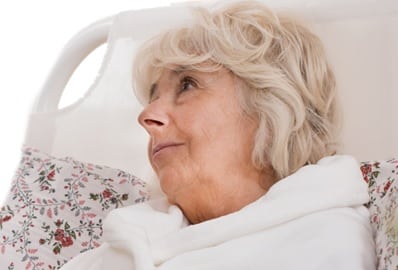
Ease of Use
Surprisingly, ease of use is often an afterthought when it comes to purchasing any new equipment, let alone a therapeutic chair. How easy is the chair to operate? If you are buying the chair for yourself, perhaps you already have some knowledge of how to use it, but are you purchasing a chair for a user to operate on their own? Or instead, is a staff member simply given the new chair and expected to figure it how it is operated? Extra features may seem like a great idea,but consider how easy they are to use for the very first time.
For a multi-user environment like a nursing home, how many patients will be using the chair over time? If multiple users are using the chair, be sure to look for an adjustable one, but don’t forget to ask how easy these adjustments are to make. Some adjustable gerichairs require specialty tools to adjust parts. If you find a chair of interest, ask the company how they will provide you with technical support should you need it. For instance, Seating Matters provides phone and in-person support where possible, but to make troubleshooting even easier, we have compiled a public video library of “How To” videos.
Comfort Level
You’ve most likely already considered comfort for furniture that you’ve bought in the past. Therapeutic seating is no different, as comfort is one of the first things a patient notices when they are seated in their chair. Options like memory foam, pressure relief cushions, or air and gel pads, can provide additional comfort. As long as the 4 Principles of Pressure Management are being met, patients sitting for long periods of time are not at risk of pressure injuries among other negative side effects.
An often overlooked feature, a footplate, can add significant levels of not only comfort, but pressure support. If you’ve spent time reading some of our articles before, you know that the footplate can absorb some of a person’s body weight. Some patients may also benefit from an option to prop their feet up – either to prevent falling from their chair or to encourage healing on lower extremities. Conversely. others may need to keep their feet lowered if they experience tight hamstrings or contractures. This brings me back to my point about ease of use (adjustability), to ensure multiple users can sit comfortably and without causing further damage.
I think it seems safe to assume you would never buy a car without test driving it first. So why would you buy a pressure management chair without trying it out first? We recommend a patient is first assessed for a chair before they then test out a chair to conclude that it fits care needs.
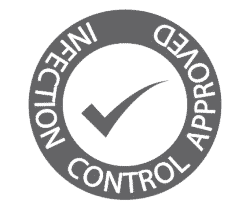
Safety
If you work in a care environment, this is likely one of the first considerations you make when purchasing a chair (and for good reason). Safety is a large topic in healthcare, and to keep this article short, I’ll focus on three different areas pertaining to safety in a pressure relief chair: infection control; weight/height restrictions; and falls prevention.
Is the chair Infection Control Approved and is it easy to clean effectively with hospital grade cleaning agents? It’s helpful to ask a company what materials their product is made out of and ensure that they are easy to clean. Even better is to find a chair that easily comes apart and can be more thoroughly cleaned. Removable arms, cushions and even footplates make cleaning quick and easy.
Of course, you can’t forget there are height and weight restrictions on different chairs. While these considerations are still valid for someone buying a bariatric orchild’s chair, someone over 600 lbs or over 7’ tall will likely need to seek a chair that can accommodate their measurements.
And what about falls prevention? Have you considered patients suffering from involuntary movements, muscle weakness, lack of trunk control, that may also use the chair? Is the chair compatible with every unique patient or is yours at risk of an accidental fall?
Warranty
Unfortunately, not all medical equipment comes with a warranty. Even if it does, warranties can vary drastically. It should go without saying that healthcare equipment isn’t cheap. And like most things, you get what you pay for. If you are investing a couple thousand dollars into a chair, mattress or other equipment, do yourself a favor and protect your investments.
At Seating Matters, our chairs come with a built in 7 year frame warranty. With responsible use, we also cover upholstery for up to 1 year. We are proud to see many 7-10 year old chairs, like this one below, still in use today.

Proven In Real-World Scenarios
As obvious as this may seem, it is the most overlooked aspect in chair selection. Designs may sometimes seem sound, but things can change once a patient tests a new prototype. At Seating Matters, we have been continually improving on the design of our chairs to provide the very best in pressure management, postural support, comfort and ease of use. In addition to this, we carried out clinical field research in three nursing homes to identify the importance of therapeutic seating in elderly patients.*
Putting It All Together
This is just an overview of considerations that facilities or family members should consider prior to purchasing a pressure management chair. These points apply no matter whether you are looking at adult, child or bariatric chairs, and are a good way to begin your research. There is no “one size fits all” approach to seating every patient and sometimes customizations or added accessories are necessary. In these cases, we recommend that a patient is seated in one of our chairs before determining whether or not it will do the job. Some will know immediately if the chair is for them or not, others need a bit of time in their seat.
We provide seating assessments, demonstrations as well as a rental programs to individuals or facilities to help find the right chair for patients in need of a pressure management chair.
Note – the purpose of this blog is to give an overview of the product with some tips to consider on its use. This is not intended to be a substitute for professional or medical advice, diagnosis, prescription or treatment and does not constitute medical or other professional advice. For advice with your personal health or that of someone in your care, consult your doctor or appropriate medical professional.
*These results should not be interpreted as a predictor or guarantee of future financial or clinical outcomes with different patients. Clinicians and users must employ correct decision making, undertake proper assessments, education, comply with local regulations and ensure correct use of equipment. The resulting report from this randomized control trial shows that the study consisted of 38 participants from 3 nursing home settings, who were randomly assigned to control and intervention groups using computer-generated numbers. The study’s results in regard to pressure ulcers has been calculated from the change in pressure ulcers/pressure injuries/skin redness in both the intervention and control group. As a pilot study of a specific nature, it was not blinded. The measurement of pressure ulcers was observational and the analysis of the results included various forms, not including statistical analysis. The study has been reviewed and presented at over 30 academic conferences in 3 continents and is pending publication in a respected peer-reviewed journal.
As used by








Pressure Relieving Chairs & Cushions
Sustained pressure on any human body can create issues and cause problems that limit the ability to feel comfortable. Patients with special needs or those in elderly care are often the most at risk of developing problems when sitting since they require additional help to move about, and usually spend many more hours of the day in their chair, compared to those that have full mobility and functionality.
A pressure care chair is an ideal choice for any facility that cares for patients with such needs. Fortunately, Australia has a manufacturer that achieves the highest standards of quality and comfort, ensuring those who need to sit for long periods a better standard of living.
Looking for the Best Pressure Relief Chair?
At Seating Matters, we continually draw on our thirty years of experience in Occupational Therapy to find new ways to enhance the superior chairs that we already manufacture and supply. We are the go-to choice for nursing homes, hospitals and occupational therapists who seek to reduce the number of pressure injuries and falls in their facilities. We have clinical evidence that that shows our chairs can help prevent pressure injuries and each of our chairs can be adjusted to fit anyone or any size.
How a Bad Chair Can Lead to Many Complications
The benefits of a pressure reducing chair cushion are many. However, in some cases, the chair on which a person is sitting often negates the positives that should be felt by its presence. If the frame and design of the chair fail to support the individual needs of the person that sits in it, then the gains that are achieved by any other support device or product are limited.
Matching a chair to the patient is important. This process assesses the unique and individual needs of that person and the resultant solution put in place should be adapted accordingly. In the absence of such assessments, patients are often seated in chairs that do little to relieve the pressure they feel from sustained sitting.
The inability to move independently means that force on the body and limbs creates discomfort, agitation and this can often lead to uncharacteristic behaviour that is upsetting to both the patient and caregivers.
Here at Seating Matters, we believe that a pressure relief chair should mitigate all of the above as much as possible. We appreciate that immobility reduces the quality of life for any patient and so, our chairs are developed to promote proper posture and provide the support needed to deliver a high comfort factor.
We seek to provide chairs that are developed to enhance the ability for repositioning for weight redistribution, that are adaptable and adjustable to a person’s size, that deliver appropriate cushion use and that are also breathable.
Why Pressure Relieving Chairs Are Beneficial to Buy
To date, we have received many positive testimonials from customers who either personally, or through the deliverance of care have benefitted from our pressure relieving chairs. Our research and development work affords us with the key principles of correct positioning, seating and mobility, and we factored this crucial information into the design and development of each chair that we produce.
At Seating Matters, you can access chairs that can be adjusted without tools in less than one minute. That’s the kind of flexibility, adaptability and support that should come as standard where the care for those with special needs or those in elderly care is concerned.
Our pressure relieving recliner chairs are the benchmark for quality in healthcare. A free seating assessment is yours to claim today, so contact us to book an appointment and embrace a comfortable future.
Seating Matters provides clinical healthcare seating chairs for Disabled & Elderly people in Australia. We sell kyphosis chairs, orthopedic chairs, cerebral palsy chairs, occupational therapy chairs, parkinsons disease chairs, huntington’s disease chairs, tilt space chairs, fall prevention chairs, motor neuron chairs, multiple sclerosis chairs, brain injury chairs, Paediatric chairs & other seating range in Australia. Browse our website for more information or contact us for more details.
Read Less

